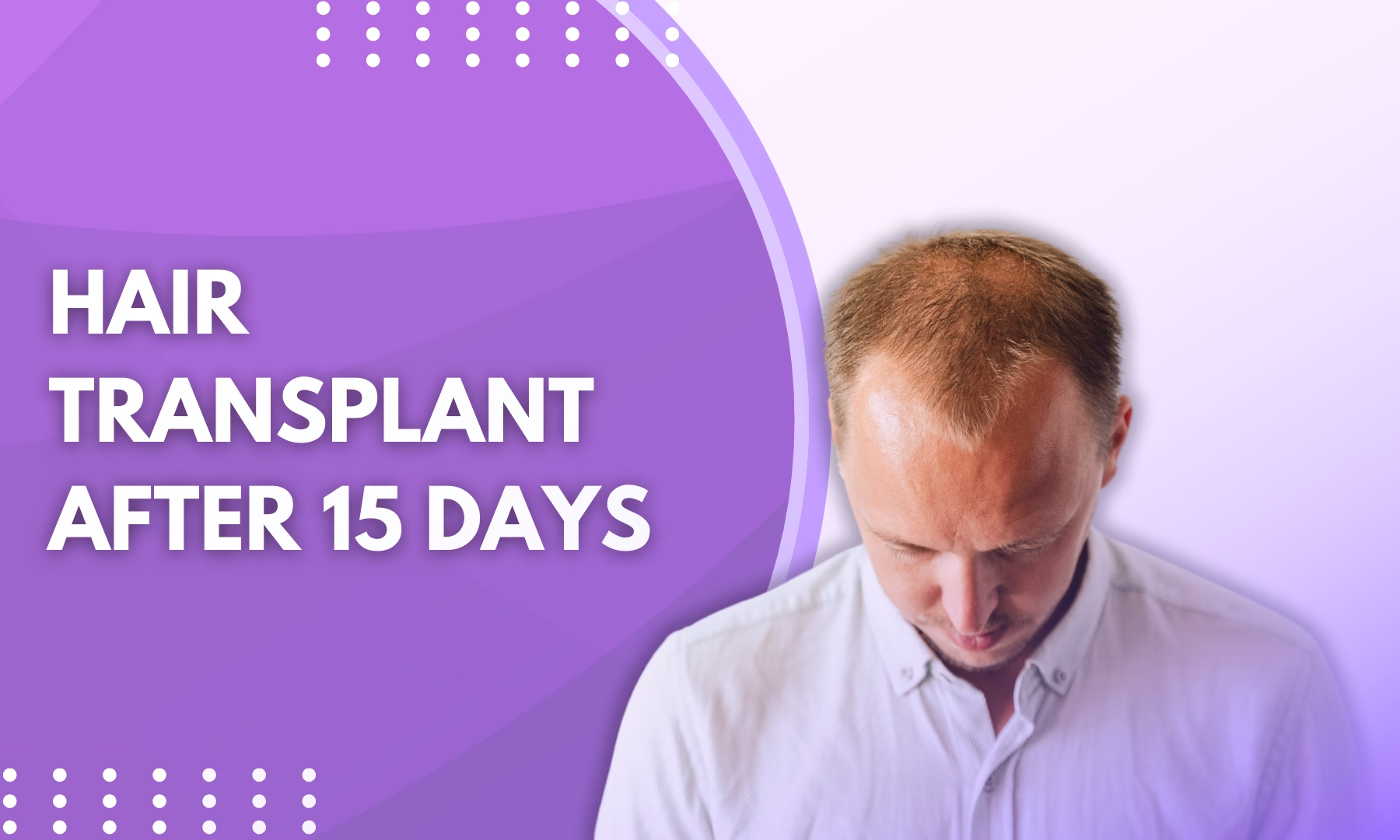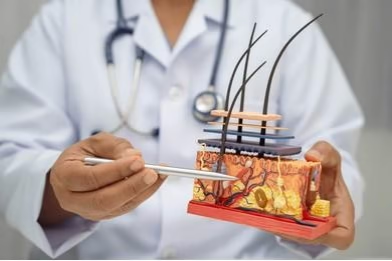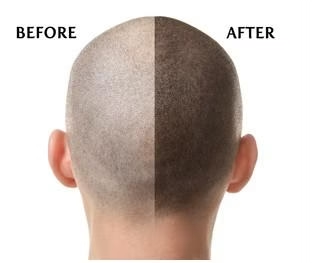
So, it’s been 15 days since your hair transplant. How are you feeling? You might be wondering: Is everything going as planned? Why is my hair shedding? And what’s next for me?
First of all, congrats! You’ve made it through the first two weeks. That’s no small feat. It’s completely normal to have questions at this stage, and you’re not alone in feeling a little unsure. But don’t worry—we’re going to walk through it all together. Dr. Viral Desai, a leading cosmetic and plastic surgeon in Mumbai, is here to help guide you.
You’ve made it this far—let’s dive into the details. Here’s what’s happening with your scalp, what’s totally normal, and how to keep things on track, whether you’re recovering naturally or considering a hair transplant.

Scalp Condition and Healing Progress at Day 15
So, your scalp is still in recovery mode, right? By Day 15, it’s normal to see some redness, swelling, or even scabs in the transplanted areas. It might look a little raw or irritated, but this is actually a great sign—it means your scalp is doing its job and your follicles are settling in.
But here’s where things can get tricky. Around Day 21, many people experience shock loss. Yep, your transplanted hair might start shedding. I know—it sounds like the last thing you want to hear. After all, you just got the transplant, and now your hair is falling out?
But here’s the thing: shock loss is actually a good thing. It means your follicles are adjusting, resetting, and preparing for fresh, healthy hair growth that will typically start becoming visible around 3 months after hair transplant surgery.
Dr. Desai, a cosmetic and plastic surgeon, says, “Shock loss is completely normal. The hair falls out temporarily, but this is the body’s way of preparing for new growth.”
So, if you’re seeing shedding, don’t panic. It’s just your hair follicles getting ready for the next phase. It’s totally natural!

Why Transplanted Hair Falls Out
Okay, now let’s talk about why your hair falls out 2 weeks after hair transplant surgery. It’s totally normal, even if it feels a little counterintuitive. You just had a transplant, so why would your hair fall out?
Here’s what’s happening: shock loss. This is when the transplanted hair falls out temporarily. Think of it like pressing the reset button for your follicles. It’s the natural next step before your hair starts growing back in stronger and healthier.
Dr. Desai explains, “The shedding is part of the natural cycle. The follicles reset, and new hair will grow back even stronger.”
So yes, while it may feel strange, your hair shedding right now is a positive sign. Your follicles are doing what they need to do to help you grow that thick, healthy hair you’ve been waiting for.
Do’s and Don’ts After 15 Days of Hair Transplant
You’ve made it through the first two weeks—great job! But now, the key is to follow the right aftercare steps to support your scalp and make sure that hair starts growing strong and healthy. Let’s break it down:
Do’s:
- Stick to your aftercare plan: Your surgeon gave you a specific recovery plan. Following it to the letter will help you heal the right way.
- Keep your scalp clean: Gently wash your scalp with a mild shampoo. Don’t scrub—just let the shampoo do its job.
- Eat well and stay hydrated: Good nutrition and hydration go a long way in supporting your healing and hair growth.
- Sleep with your head elevated: This helps reduce swelling and relieves pressure on your scalp.
Don’ts:
- Avoid direct sun exposure: Your scalp is still healing, so protect it from the sun. Wear a hat or use sunscreen if you have to be outside.
- Don’t scratch or pick at scabs: I know it might itch, but scratching can interfere with the healing process and even damage your follicles.
- No intense exercise: Sweating can irritate your scalp, so keep your workouts light for now.
Dr. Desai says, “The first few weeks are essential for recovery. Follow the instructions closely and give your scalp the time it needs to heal properly.”
Post-Op Care for Long-Term Hair Growth
The first 15 days are just the beginning. For long-lasting, healthy hair, it’s important to continue caring for your scalp as your hair grows back. Here’s what you can do moving forward:
- Stay consistent with your scalp care routine: Use gentle products and avoid anything too harsh.
- Be patient: It can take several months to see full results, so don’t rush the process.
- Keep up with your check-ins: Regular follow-ups with your surgeon will help ensure everything is progressing as it should.
Dr. Desai advises, “Consistency is key. Stick with your routine, and your hair will grow back thicker and healthier.”
Patience is your best friend here. Keep doing what you’re doing, and soon enough, you’ll start seeing the full results.
Conclusion
So here’s the bottom line: at Day 15, shedding is totally normal. It’s just part of the process. With the right care and a little patience, your hair will grow back better than before. Stay consistent with your aftercare, follow your surgeon’s advice, and be patient as your new hair begins to grow in.
Remember, this journey takes time, but the results will be totally worth it. Keep going, and before you know it, you’ll be enjoying the thick, full hair you’ve always wanted.
Frequently Asked Questions
Q1: How long before I see hair growth after a transplant?
Hair typically starts growing around 3 to 4 months after the transplant, with visible results appearing between 6 to 12 months.
Q2: Can I experience shedding after 15 days of a hair transplant?
Yes! Shedding is part of shock loss, and it’s completely normal.
Q3: Is it okay to exercise after 15 days?
It’s best to avoid intense exercise for at least three weeks to ensure proper healing.
Q4: What should I do if I notice patchy or uneven growth after 15 days?
If you notice anything unusual, reach out to your surgeon. They’ll assess your recovery and guide you on the next steps.
Disclaimer: The content shared on this page is for informational purposes and not for promotional use.


